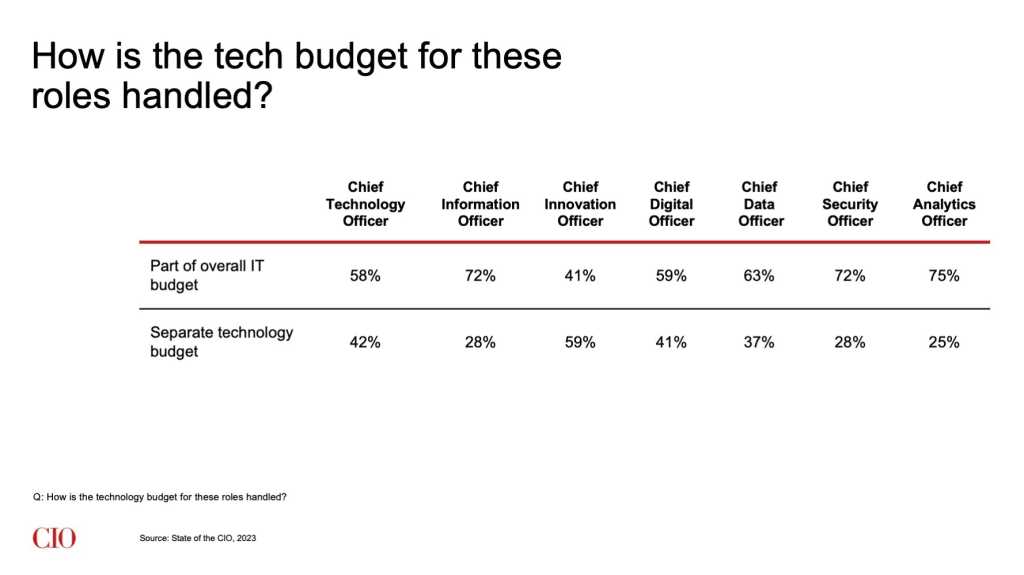- 8 ways diversity and inclusion help teams perform better
- AI has grown beyond human knowledge, says Google's DeepMind unit
- Microsoft still has a massive Windows 10 problem - and there's no easy way out
- Midnight Blizzard Targets European Diplomats with Wine Tasting Lure
- AI 시대의 또 다른 과제 ‘데이터 자신감 격차’··· IT 리더가 관리해야 할 이유
Why data leaders struggle to produce strategic results

Prominence matters
How CDAOs are positioned in the organization also impacts data and analytics success. According to Foundry’s 2023 State of the CIO survey, 53% of chief data officers and 45% of chief analytics officers report to the CIO, while just 35% and 38% report to the CEO, respectively. Moreover, only 37% of CDOs and 25% of CAOs report having budgets separate from IT overall.
Foundry / CIO.com
Medeiros concedes that CDAOs who report to the CIO and sit within the IT function can still be effective, but, in general, the higher CDAOs sit in the org chart, the better, she says, as this gives them more visibility and better leverage to work on organizational goals.
“It depends on their roles, responsibilities, and how much time they’re allotted for what we call business enablement — not just enterprise IT but actually helping the organization do what matters,” Medeiros says. “It can be things like cost efficiency, but it’s also new products and services that data and analytics supports and can call out.”

Foundry / CIO.com
Indeed, Rita Sallam, distinguished VP analyst at Gartner, says that by 2026 more than a quarter of Fortune 500 CDAOs will have become responsible for at least one data- and analytics-based product that becomes a top earner for their company.
To get there, though, Medeiros says CDAOs must prioritize strategy over tactics. While tactical elements such as data quality and data security are important, improving effectiveness relies on aligning the data and analytics function with organizational strategic priorities and selling the data and analytics vision to key influencers like the CEO, CIO, and CFO.
“Most CDAOs are delivering on immediate-term business goals, but for around half of CDAOs surveyed, delivery against goals for future-term growth and sustainability is lagging,” Medeiros says.
She notes that the most successful data leaders are focusing on improving decision-making capabilities, monetization of data products, and cost optimization, as well as improving data literacy and fostering a data-driven culture.

